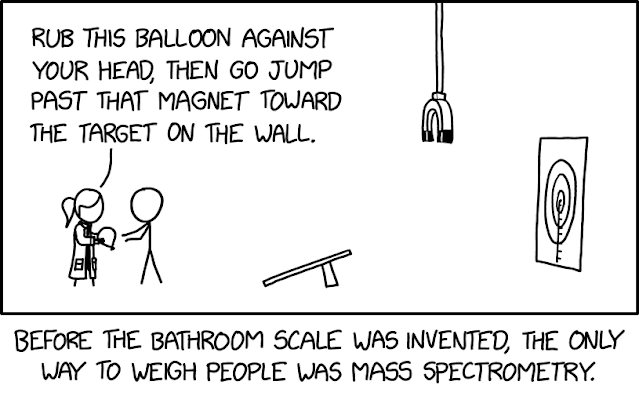I've said it before, but an atomic trampoline demonstration set-up would make for a spectacular gift for your favorite neighborhood blogger.
NileRed took a different route than I've taken - which is mostly just wishing that I would stumble across an atomic trampoline and not really doing anything at all to make that happen - and decided to make a disk of amorphous metal on his own.
Admittedly, one of our ASM Master Teachers has a lead on getting sets of amorphous metal disks for us to have in our classrooms. It involves the material scientists at Apple's headquarters in California and turned out to be much more complicated than expected because - as NileRed finds out - the adhesive used to affix the amorphous metal to the steel base is highly relevant in maintaining the ridiculously bouncy nature of amorphous metals in this application.
Here's to hoping that my strategy of doing nothing and just hoping things will work out will...um...work out.
I'll include the Grand Illusions videos that inspired Steve Mould's video that in turn inspired NileRed's above video...



